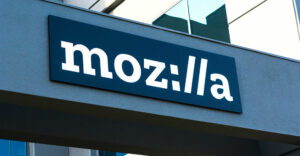
The world’s largest distributor of Linux expects 50 percent of its revenuesto be coming from overseas sales within the next year — a revelation oneanalyst sees as a bit of a capitulation.
“It’s our goal that within the next 12 months, 50 percent of our revenues befrom sales outside the United States,” explained Red Hat spokesperson LeighDay.
“We’re striving to be a global company,” she told LinuxInsider. “We haveoffices all over Europe and Asia. We’re seeing Linux have traction in manynations. It’s a technology that’s interesting to many cultures abroad.”
Can’t Dislodge Windows
To one analyst, though, U.S.-based Red Hat’s emphasis on overseas sales indicates failings elsewhere.
“That’s almost — but not quite — a concession speech,” Laura DiDio, a senior analyst with the Yankee Group in Boston said. “It’s a concession that they’re not going to do a great job dislodging Windows, especially on the desktop, here in North America.”
“Here in the U.S., you have a huge Microsoft installed base on the desktop,” added Chris Foster, an analyst with Technology Business Research (TBR) in Hampton, New Hampshire.
“Particularly in the corporate space, you have issues with companies being reluctant to go with a less-proven platform,” he told LinuxInsider.
On the server side, however, Linux has a better shot at success, he contended.
“Companies have used Unix and Linux isn’t so much different that they’re afraid to embrace it,” he said.
That certainly seems to be the case among Fortune 500 companies where 65 percent of those firms are Red Hat customers, according to Day.
Overseas Green Fields
Focusing resources on overseas markets is a good strategy for any Linux distributor, DiDio maintained, because that’s where the most “green-field” networking opportunities exist — opportunities where the networking infrastructure is either under-developed or non-existent.
“The biggest growth opportunity for Linux exists in green-field networking situations,” she said. “Most green-field networking situations are abroad.”
She asserted that if an enterprise already has a network in place, Linux can be very expensive to deploy.
“I’m not saying it’s not worth it — that’s up to the company to decide, but what we tell customers is that they have to factor in all the costs. And up to now, a lot of people haven’t done that,” said DiDio.
She cited Yankee survey data that showed 53 percent of respondents who wereplanning a migration from Windows or Unix to Linux had failed to do a thorough product cost analysis of their situation.
Another factor driving Linux migration abroad is its adoption by government entities.
Microsoft Hatred
Red Hat’s Day explained that governments like Linux because they aren’t locked into a single vendor after they install it. “They also like their ability to save IT costs and to examine a technology that’s extremely accessible and will enable them to scale their infrastructure,” she said.
“Europe is much more open to embracing Microsoft alternatives than the U.S. is on a federal government or state government level,” TBR’s Foster added.
DiDio characterized European governments’ attitude more bluntly: “They hate Microsoft.”
“But,” she added, “now you see a lot of them actually doing the math and saying [Linux] is really not free.”
An enterprise doesn’t pay a licensing fee for Linux, she continued, but it doesn’t get indemnification or a product warranty either.
“They’re going to pay through the nose for technical service and support,” she maintained. “They may have to build customized applications.”
No Longer Niche
Nevertheless, Linux’s global presence has helped it emerge from the software crevices. “Linux has definitely surpassed its niche reputation,” Day observed. “It’s the world’s fastest growing operating system.”
And Red Hat continues to benefit from that growth. It its last quarterly report for the period ending August 31, the company showed comparative revenue growth of 60 percent to US$46.3 million from $28.9 million a year ago, and profit growth of 225 percent, to $11.8 million from $3.6 million in 2004.




















































DiDio said "An enterprise doesn’t pay a licensing fee for Linux, she continued, but it doesn’t get indemnification or a product warranty either."
Ever read the Microsoft EULA, guess what ? Microsoft doesn’t offer indemnification or warranty either. If their code wipes out your data, too bad, that’s on *your* head not theirs.
As for "conceding defeat", what a moronic observation. Red Hat said nothing about reducing sales in the US, merely that they wanted to increase them abroad.
The lady needs to find a clue.
Lessee, they’re making inroads in the server market *everywhere*, they’re making inroads in the offshore gov’t market, but they’re "conceding defeat" because they haven’t stormed the desktop market? Give me a break, Laura! RHAT is doing better financially than ever. Ballmer’s throwing FUD over Linux almost daily, Dell just signed up to offer pre-loaded Linux servers, the embedded market’s taking off, there’s numerous desktop pilots going on, where is all this a concession of defeat?
If it had been MS doing the same thing (waitaminute – they ARE doing the same thing) the headline would have been something like "Microsoft looking to expand it’s global markets."
But because it’s Redhat and because DiDio is profoundly anti-Linux/FLOSS (such bias is not something you want in an industry analyst) we hear that Redhat is abandoning the US market even though revenue in the US is not declining nor are they shifting resources away from the US.
LinuxInsider – they’re not about Linux nor are they insiders.